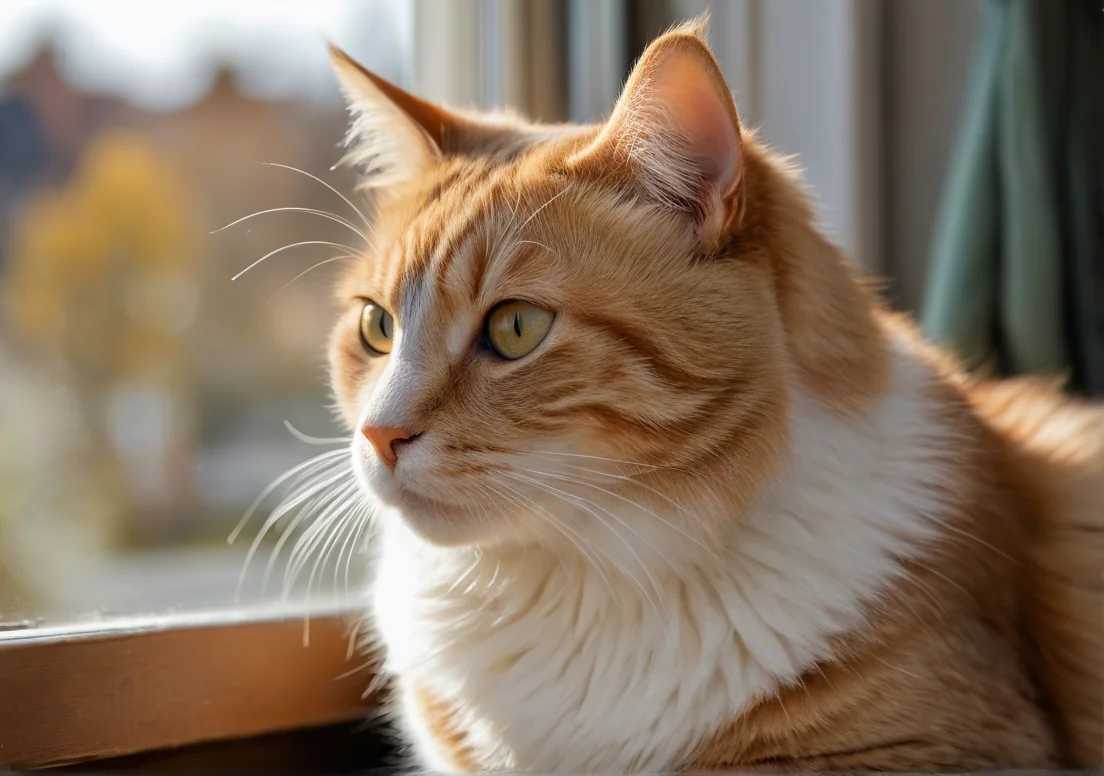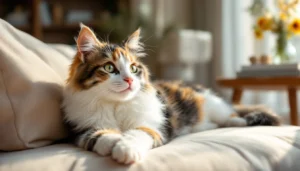Cats have a knack for making their desires known, and if yours is constantly pawing at the door, you might be wondering what’s driving that urge. Whether it’s the sights, sounds, or just the thrill of adventure, our feline friends definitely have their reasons for wanting to venture outdoors.
Cats are natural explorers. With instincts rooted deep in their DNA, they crave the stimulation found outside—fresh air, new smells, and the opportunity to engage with their environment. But there’s more to this than just instinct. Behind that innocent meow is a world of motivations waiting to be uncovered, and you’ll want to stick around to learn the fascinating details of your cat’s outdoor fascination.

What drives a cat’s urge to explore?
Cats are naturally curious creatures, and their desire to explore stems from a mix of instinct and behavior. A cat’s ancestors were solitary hunters, roaming vast territories in search of prey. This instinct to explore and hunt is still alive and well in your domestic cat.
The scent-marking behavior is another factor; when a cat encounters new smells, it triggers their instinct to investigate. That’s why your cat might beg to go outside—it’s not just about the thrill of the chase, but also about claiming territory. This innate drive fuels their desire to explore beyond the familiar walls of home.
Additionally, mental stimulation plays a critical role. Cats are intelligent animals, and they thrive on varied experiences. Boredom can lead to problematic behaviors, like scratching or excessive meowing, which just might push them to find adventure outside. So, if you notice your cat staring longingly at the door, it’s likely a mix of instinct and a strong desire for mental engagement.
How does environment influence your cat’s behavior?
The environment you create can significantly impact your cat’s desire to venture outside. A stimulating home filled with climbing structures, toys, and interactive playtime can help fulfill some of their need for exploration and engagement. Cats that lack this stimulation may interpret their indoor life as monotonous, leading to a stronger longing for the outdoors.
Certain factors can also drive this behavior:
- Presence of windows: If your cat has frequent access to windows, they can watch birds, squirrels, and other outdoor activities, sparking their interest in going outside.
- Socialization: Cats are social animals. If they see other cats exploring the neighborhood, it can heighten their own desire to join in.
- Space: An apartment with limited space might lead a cat to feel claustrophobic, increasing the urge to escape outdoors.
Understanding how your cat’s environment affects their need for adventure can help you create a happy balance between indoor safety and outdoor exploration. Some owners find success by providing enrichment activities or outdoor enclosures where their cats can enjoy the fresh air without the risks associated with unsupervised outdoor adventures.
What are some common reasons cats want to go outside?
Curiosity drives many cats to seek the great outdoors. They’re naturally inquisitive creatures, and outdoor environments are often packed with new sights, sounds, and smells that can’t be experienced indoors. Just imagine the fascinating critters lurking in the grass or the enticing rustle of leaves—options that can be downright irresistible.
Instinct also plays a huge role. Cats have evolved as hunters, and even well-fed indoor cats retain their predatory instincts. They might feel the urge to stalk, chase, or hunt anything that moves—whether it’s a bird, a bug, or a blade of grass. This drive isn’t just about hunger; it’s deeply rooted in their nature.
Sometimes, boredom can lead a cat to the door. Cats require stimulation; without it, they may resort to disruptive behaviors. Chewing on furniture or excessive meowing could signal that your feline is simply looking for a change of scenery or something entertaining.
Finally, there’s the social aspect. Cats are territorial animals, and they might want to patrol their domain outside. Whether it’s keeping an eye on other critters or surveying their space, being outdoors gives them a chance to assert their presence.
Can indoor cats feel confined?
Indoor environments can occasionally lead to feelings of confinement or frustration for cats. While some cats are perfectly content lounging on the couch, others might feel stuck inside, leading to anxiety and stress.
The lack of stimulation and variety in their daily routines can contribute significantly to this frustration. Indoor cats thrive on exploration but when confined, they miss opportunities to climb, scratch, and interact with diverse environments. These limitations could manifest in behavioral issues such as excessive grooming, aggression, or simply acting out in ways that indicate they’re unhappy.
Adding vertical space like cat trees or shelves can provide indoor cats with that much-needed outlet for their territorial instincts and curiosity. Alternatively, providing toys that mimic hunting behavior or setting up regular play sessions can help reduce that urge to dart out the door.
Creating an enriching indoor environment can help alleviate the desire to venture outside. Consider incorporating scratching posts, interactive toys, and even window perches where cats can watch the outside world without stepping foot outside.
What dangers do outdoor adventures pose?
Outdoor adventures might seem like a thrill for your cat, but they come with serious risks. Traffic is a major danger; even the quickest of felines can fall victim to cars. Then there are predators like hawks, coyotes, or even other cats that might view your beloved pet as a target.
Let’s not forget about diseases. Cats can contract various ailments from roaming, including feline leukemia virus (FeLV) and feline immunodeficiency virus (FIV), both of which are highly contagious among feral populations. Parasites like fleas, ticks, and worms are also more prevalent outdoors, which can lead to discomfort and health issues.
Moreover, the outdoor environment is unpredictable. Sudden changes in weather, exposure to toxins, or hostile encounters with unfriendly animals can turn a fun outing into a nightmare. Considering these threats, keeping your cat safely indoors while satisfying their adventurous spirit is essential.
How to keep your cat stimulated indoors?
Indoor cats often seek excitement, so creating a stimulating environment is key to satisfying their adventurous instincts. Start with interactive toys. These can include feather wands, laser pointers, or puzzle feeders that challenge their hunting skills and keep them engaged.
Cat trees and shelves are a great addition, providing vertical space for climbing and perching. Cats love to survey their territory from above, which mimics the vantage point they’d enjoy outdoors.
Consider setting up a window perch so your feline can watch the world go by—birds, squirrels, and passing cars can keep them amused for hours. Rotate their toys regularly to keep things fresh and interesting.
Offering sensory experiences can also make a big difference. Try planting some cat-safe herbs like catnip, or bring in some dried leaves to let them explore different scents and textures. Additionally, you might want to set up a safe outdoor space like a catio (cat patio) if outdoor exposure is absolutely necessary. This way, they can enjoy the breeze and sunshine without the associated risks.
For a unique twist, consider using technology. Cat TV or pet cameras that show outdoor scenes can captivate their interest and provide visual stimulation while keeping them safe indoors.
Combining these elements not only keeps your cat happy but ensures they remain protected from the potential dangers lurking outside.
What are some safe alternatives to outdoor access?
Cats can be adventurous and curious, which often leads them to crave outdoor exploration. However, safety concerns mean it’s essential to find alternatives that satisfy their instincts. Harness training is a fantastic option—invest in a comfortable harness and leash, and take short walks. This can help your cat experience the sights, sounds, and scents of the outdoors while keeping them secure.
Another excellent alternative is a catio, or a cat patio. This enclosed outdoor space allows your feline to bask in the sun and enjoy fresh air without the risks of traffic, predators, or escaping.
Consider these fun ideas to enrich your cat’s indoor experience as well:
- Window perches let cats see outside and soak up the sun.
- Potted plants like cat grass can engage your cat’s instincts safely.
- Interactive toys that mimic hunting behavior are great for keeping them entertained.
- Playtime sessions with you provide exercise and a bond-building experience.
These alternatives not only keep your cat safe but also help stimulate their senses and satisfy their need for exploration.
What do recent studies say about outdoor cats?
Research paints a complex picture of outdoor vs. indoor cats, shedding light on their behavior and impact on wildlife. Studies suggest that outdoor cats have a much higher risk of encountering dangers like cars, predators, and diseases. According to the American Veterinary Medical Association, outdoor cats have shorter lifespans due to these hazards, often living only 2-5 years compared to the 12-15 years typically seen in indoor cats.
On the environmental side, outdoor cats significantly impact local wildlife. A study published in the journal Nature Communications revealed that cats kill billions of birds and small mammals each year, contributing to declines in certain species. This highlights the importance of keeping cats indoors or using safe alternatives to outdoor access.
Moreover, indoor cats benefit from fewer health risks. They tend to experience lower rates of parasites and infectious diseases, fostering a more stable health trajectory overall. Balancing a cat’s natural instincts with their health and environmental responsibilities is crucial.
How to balance your cat’s exploration with safety?
A cat’s instinct to explore is as strong as their need for comfort, and that pull towards the outside world can be tough to manage. Keeping them safe while satisfying that urge means being proactive.
First off, consider establishing a secure outdoor space. A catio or enclosed backyard provides the thrill of fresh air and sunshine without the risks of cars or predators. You can also create an engaging window perch. Cats love watching the world unfold outside—birds, squirrels, and the rustle of leaves can provide endless entertainment.
When direct outdoor access isn’t feasible, play sessions can mimic the excitement of exploration. Use toys that encourage jumping, climbing, or pouncing, and rotate them to maintain interest. Also, consider investing in feline puzzle feeders that require them to solve challenges for treats, simulating the hunt and making their home feel more stimulating.
For a unique angle, think about using a harness and leash for supervised excursions. This allows your cat to experience the outdoors while keeping them under your control. Start by letting your cat wear the harness indoors for a few days, then step outside for brief trips. Gradually increase the duration as they become comfortable. Always ensure you’re in safe areas, away from busy streets or aggressive animals.
Lastly, make use of enrichment activities indoors, such as climbing trees or scratching posts. These can channel their energy into safe avenues and reduce their desire to roam outside constantly.
Balancing exploration with safety is all about providing stimulation and opportunities in a secure environment.
Alex, a passionate animal lover, has experience in training and understanding animal behavior. As a proud pet parent to two dogs and three cats, he founded AnimalReport.net to share insights from animal experts and expand his knowledge of the animal kingdom.




